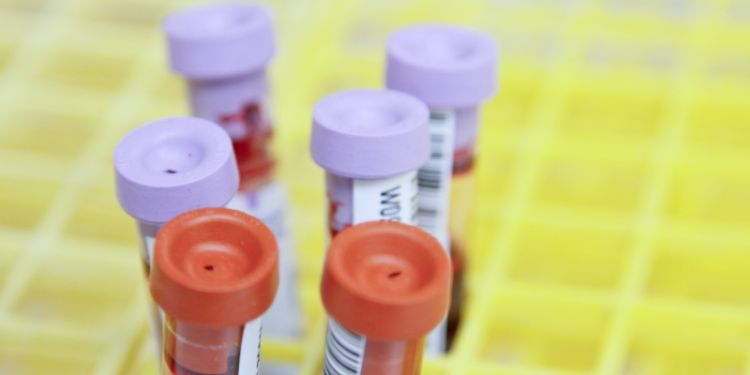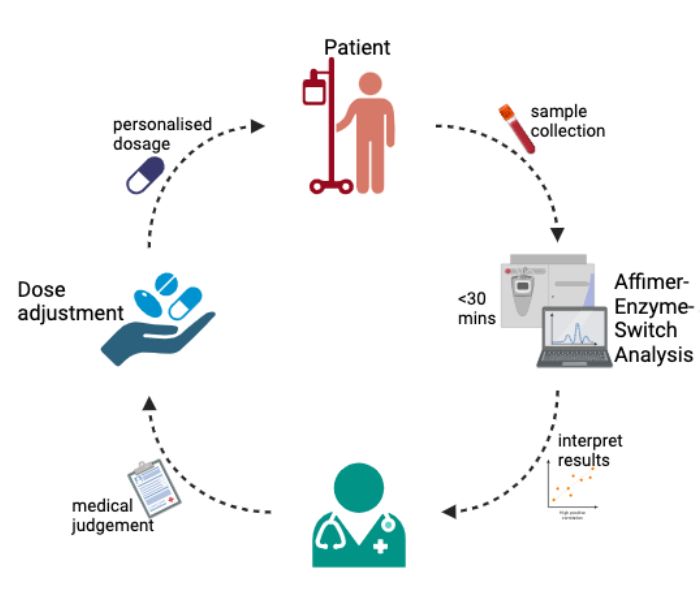Scientists discover promising new way to personalise treatment for patients with cancer and autoimmune diseases

Researchers at the University of Leeds have developed a new diagnostic approach that can quickly identify how a patient is responding to antibody medication.
The technology, which uses special sensors called enzyme switch sensors, can detect the amount of therapeutic monoclonal antibodies (TmAb) that are present in a patient’s system.
TmAbs are medicines that are typically administered to a patient in hospital and work by encouraging the immune system - your body's natural defences - to attack and kill dangerous cells.
They can be found in treatments for cancers such as breast, stomach and skin cancers, as well as autoimmune diseases, including rheumatoid arthritis.
While TmAbs are proven to be effective, each patient will respond differently to treatment, depending on a variety of health factors. They are also very expensive.
Using this new approach, scientists have hopes clinicians will be able to run a quick blood test in hospital to see how many antibodies are in a patient’s system which will help to inform future treatment.
Emma Campbell, PhD student in the Faculty of Biological Sciences, said:
“This is an exciting development in treatment for cancer and autoimmune diseases.
“By delivering more accurate doses to patients, clinicians can fine-tune medication to make sure it's just right for the individual, improving the chances of faster recovery, reducing unnecessary side effects and potentially reducing costs. This type of test will also bring back results quickly.
Clinicians will know how a patient is responding to treatment within about 30 minutes of a test, unlike current testing which has a lengthy timeframe and which is unable to take place at bedside.

How enzyme switch sensors work
Enzyme switch sensors act like tiny detectives that ‘switch’ on and off depending on the level of TmAbs present.
The sensor is composed of three different proteins – detector, switch and reporter proteins – which are intricately fused together.
The two detector proteins – which are Affimers - specifically bind to the tips of a therapeutic antibody, even at very low concentrations.
When this happens, this causes a change within the protein and encourages the switch protein to break away, causing the reporter protein to 'switch on'. The reporter molecule then changes the colour of the solution from yellow to red.
The extent of the colour change from yellow to red, which indicates the amount of antibody in a patient’s system, can be measured. If there’s no colour change, this shows there are no antibodies in their system.
The detector proteins
The detector proteins are Affimer proteins developed at the University of Leeds. Affimers can be engineered to specifically detect biopharmaceuticals such as TmAb.
Dr Darren Tomlinson, Associate Professor in the School of Molecular and Cellular Biology added:
“This study builds on our award-winning work into Affimer technology.
“Affimer proteins have huge potential as they are developed in the lab using a screening library and therefore do not require the use of animals.
We hope to continue our work in this area and adapt the enzyme switch sensor to detect other drugs to improve the monitoring of a range of therapies.
The paper, Enzyme - Switch sensors for therapeutic drug monitoring of immunotherapies, is published in Biosensors and Bioelectronics and is funded by Biotechnology and Biological Sciences Research Council (BBSRC) and the Defence Science and Technology Laboratory (DSTL).
Notes to editors:
• Information about our award for research in Affimer technology can be found here: www.nc3rs.org.uk/3rs-prize-winners




